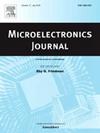Hydrogen and oxygen induced abnormal reliability degradation in flexible top-gate amorphous In-Ga-Zn-O thin-film transistors under negative bias thermal illumination stress
IF 1.9
3区 工程技术
Q3 ENGINEERING, ELECTRICAL & ELECTRONIC
引用次数: 0
Abstract
Ensuring device stability under various stress factors is critical for the long-term operation of flexible amorphous InGaZnO thin-film transistors (a-IGZO TFTs) for market-ready display applications. Here, we report the abnormal threshold voltage (Vth) shift behavior in flexible top-gate a-IGZO TFTs under negative-bias temperature illumination stress (NBTIS). Under NBTIS, an initial negative Vth shift occurred. However, with an extended stress duration, an unexpected positive Vth shift occurred, deviating from the expected charge-trapping model. Our results show that this phenomenon is strongly correlated with the thickness of the a-IGZO active layer, with thicker films exhibiting more pronounced reverse Vth shifts. Photo-excited charge collection spectroscopy and X-ray photoelectron spectroscopy analyses revealed that the density of hydrogen/oxygen-related defect states near the valence band maximum increased with increasing a-IGZO thickness, facilitating the enhanced photo and thermal excitation of charge carriers under illumination and thermal stresses. We demonstrate that the optimization of the a-IGZO channel thickness can effectively suppress the observed abnormal reliability degradation under NBTIS, providing valuable insights into optimizing a-IGZO TFTs for enhanced long-term stability in next-generation flexible and transparent electronic applications.
在负偏置热照明应力下,氢氧诱导柔性顶栅非晶in- ga - zn - o薄膜晶体管可靠性异常退化
确保器件在各种应力因素下的稳定性对于用于市场显示应用的柔性非晶InGaZnO薄膜晶体管(a-IGZO TFTs)的长期运行至关重要。在这里,我们报道了在负偏置温度照明应力(NBTIS)下柔性顶栅a-IGZO TFTs的异常阈值电压(Vth)移位行为。在NBTIS下,发生了初始的负v移。然而,随着应力持续时间的延长,发生了意想不到的正v移,偏离了预期的电荷捕获模型。我们的研究结果表明,这种现象与a-IGZO活性层的厚度密切相关,越厚的薄膜表现出更明显的反向v值偏移。光激发电荷收集光谱和x射线光电子能谱分析表明,随着a-IGZO厚度的增加,价带最大值附近的氢/氧相关缺陷态密度增加,有利于在照明和热应力下增强载流子的光和热激发。我们证明了优化a-IGZO通道厚度可以有效抑制NBTIS下观察到的异常可靠性下降,为优化a-IGZO tft提供了有价值的见解,以提高下一代柔性和透明电子应用的长期稳定性。
本文章由计算机程序翻译,如有差异,请以英文原文为准。
求助全文
约1分钟内获得全文
求助全文
来源期刊

Microelectronics Journal
工程技术-工程:电子与电气
CiteScore
4.00
自引率
27.30%
发文量
222
审稿时长
43 days
期刊介绍:
Published since 1969, the Microelectronics Journal is an international forum for the dissemination of research and applications of microelectronic systems, circuits, and emerging technologies. Papers published in the Microelectronics Journal have undergone peer review to ensure originality, relevance, and timeliness. The journal thus provides a worldwide, regular, and comprehensive update on microelectronic circuits and systems.
The Microelectronics Journal invites papers describing significant research and applications in all of the areas listed below. Comprehensive review/survey papers covering recent developments will also be considered. The Microelectronics Journal covers circuits and systems. This topic includes but is not limited to: Analog, digital, mixed, and RF circuits and related design methodologies; Logic, architectural, and system level synthesis; Testing, design for testability, built-in self-test; Area, power, and thermal analysis and design; Mixed-domain simulation and design; Embedded systems; Non-von Neumann computing and related technologies and circuits; Design and test of high complexity systems integration; SoC, NoC, SIP, and NIP design and test; 3-D integration design and analysis; Emerging device technologies and circuits, such as FinFETs, SETs, spintronics, SFQ, MTJ, etc.
Application aspects such as signal and image processing including circuits for cryptography, sensors, and actuators including sensor networks, reliability and quality issues, and economic models are also welcome.
 求助内容:
求助内容: 应助结果提醒方式:
应助结果提醒方式:


